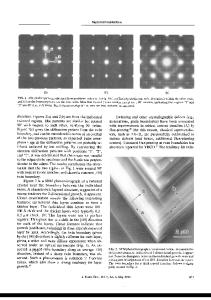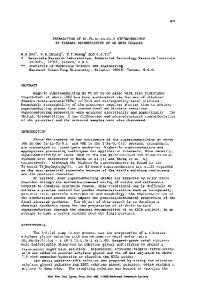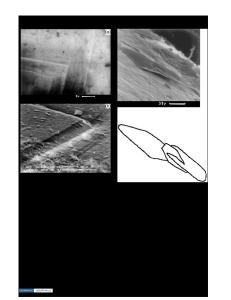Structural, Magnetic, and Electrical Properties of Bi 1.6 Pb 0.4 Sr 2 Ca 2 Cu 3 O 10+x Superconductor Prepared by Differ
- PDF / 2,709,860 Bytes
- 17 Pages / 595.276 x 790.866 pts Page_size
- 91 Downloads / 276 Views
ORIGINAL PAPER
Structural, Magnetic, and Electrical Properties of Bi1.6Pb0.4Sr2Ca2Cu3O10+x Superconductor Prepared by Different Techniques A. Coşkun 1,2 & G. Akça 3 & E. Taşarkuyu 1,2 & Ö. Battal 1 & A. Ekicibil 3 Received: 9 June 2020 / Accepted: 20 July 2020 # Springer Science+Business Media, LLC, part of Springer Nature 2020
Abstract In present work, we investigated the structural, magnetic, and electrical properties of Bi1.6Pb0.4Sr2Ca2Cu3O10+x superconductor prepared by using four different techniques: (i) solid-state (A), (ii) sol-gel (B), (iii) chemical wet (C), and (iv) melt-quench (D). From x-ray diffraction (XRD) and transmission electron microscopy (TEM) results, it is observed that the sintering process does not influence final crystallite size of compounds, but final crystallite sizes of the compounds were nearly the same after sintering process, while initial crystallite sizes were found to be different after the preparation process. From the XRD results, it is seen that the main phase in the compound is low-Tc Bi-(2212) phase and all samples contain a small amount of high-Tc Bi-(2223) phase. From scanning electron microscopy (SEM), two different types of surface crystallization of the compounds have been observed. The low-temperature resistivity, R(T), measurements show that all compounds have low zero resistivity, Tc,offset, value. Samples A, B, and C show the high-Tc and low-Tc transition at 110 and 75 K, respectively, while sample D displays only low-Tc transition at 75 K. These results have been supported by magnetization versus temperature measurement, M(T). In order to calculate critical current, Jc, values for the samples, magnetic hysteresis curves were taken at temperatures 10, 20, 30, 40, 50, and 60 K between the fields of ± 9 T. The hysteresis and the Jc calculation results show that sample D, when compared with other samples, has the best superconducting properties and has the highest Jc value. The best superconductivity properties between the studied samples have been obtained for sample A, while the best magnetic properties and the highest Jc value have been observed for sample D. According to the results obtained in this study, the structural and superconducting properties change with sample preparation method. Keywords Bi-based superconductors . Critical current density . Magnetization . TEM . XRD . SEM
1 Introduction Bi-based superconductor (BSCCO) was discovered around 1988 [1], and those materials have been investigated extensively in recent years. The BSCCO superconductor family contains three phases having the generalized chemical
* A. Coşkun [email protected] 1
Department of Physics, Faculty of Sciences, Mugla Sitki Kocman University, Mugla, Turkey
2
Magnetic Materials Laboratory, Research Laboratories Center, Mugla Sitki Kocman University, Mugla, Turkey
3
Department of Physics, Faculty of Sciences and Letters, Çukurova University, Adana, Turkey
formula Bi2Sr2Can-1CunO2n+4+x where n = 1, 2, and 3 (where n is referring to the number of CuO2 layers in the crystal str
Data Loading...











